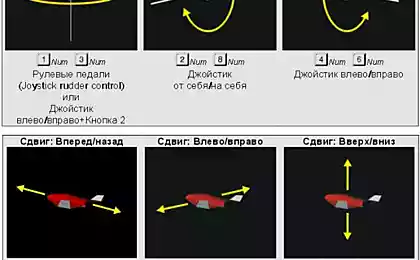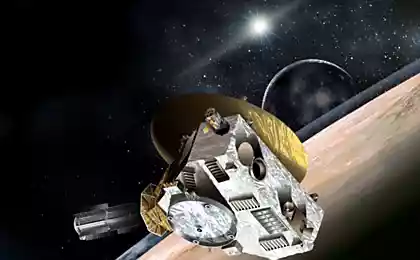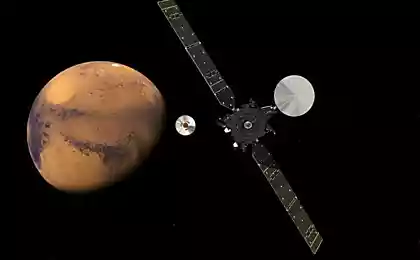2852
The dream of a Single Stage To Orbit

One embodiment of the dream of facilitating access to space - a Single Stage To Orbit (SSTO). In theory, as usual, everything is beautiful - elegant ships are dispersed on the runway, the Gypsies, are accelerated to cosmic velocities reaching orbit, the payload is unloaded, brakes, and land on the same runway. In reality, again, as usual, various problems such imperceptible stage of dreams and conceptual design, have led to the fact that in the history of space exploration, such devices have not yet flown. In this post I would like to talk about why it happened. And yet we are flying on Skylon'e Orbiter.
Place your order in the definitions h4> First of all, it must be said that under the "welcome SSTO» usually understand «SSTO + reusable." Or «SSTO + Reusable + wings (Jets takeoff / landing) + oxidant from the ambient air." The fact is that to create a single-stage rocket that would make a little cargo into orbit, now do not be too much difficulty. Even at the dawn of the space age it was possible. The first stage of an ICBM "Titan-2" could bring very small payloads into space and ICBM "Atlas" was constructively "almost-SSTO». But the creation of disposable single-stage launch vehicle does not make sense, because it will be very irrational. Single-stage rocket would have a mass of 100-150 tons, and conclusions in this variant would be no more than a ton. At the same time, the two-stage rocket with the same PN keep within 50-70 tons. These are interesting features Tsiolkovsky rocket equation.
Therefore various projects SSTO almost always involves reusable. The designers hoped to gain on the reduction of operating costs that is lost on the ineffectiveness of a single stage. Quite often, the unit was winged to the lifting force of the wing helped in flight. Also, quite often on the unit were quite unusual engines, using the unique characteristics of which, the designers hoped to design an efficient and profitable carrier.
A bit of theory h4> Consider the various ideas proposed in terms of the advantages and disadvantages of each solution.
Reusable h5> Reusable itself is not a panacea. Reducing the costs of building new copies carrier optionally offset the costs of preparing the flight returning from the carrier to the next flight. one of the posts cycle "facilitating access to space" tells a sad story about the program "Space Shuttle" economic study which proved to be incorrect. < br />
Wings h5> Wings for the spacecraft are also double-edged sword. On the one hand, they can be used to produce a lifting force and controlled airfield landing. On the other hand, the wings are a dead weight out of the atmosphere (and dense enough to support the atmosphere ends depressingly quickly), you need to spend extra fuel on their acceleration and braking with the apparatus, and need to spend a lot of extra insulation on the wings, so they do not burn when braking atmosphere. In addition, the winged machine will accelerate on flatter trajectory than the vertical launch missile, which will lead to additional losses.
Using oxygen atmosphere h5> quite logical idea - why do we need to carry with an oxidant, if we can gain from the atmosphere during the flight? But the reality again makes its price. Jet engines, each in its effective speed range, put a lot of different engines on one machine irrationally. And the epic complexity многорежимный SR-71 engine clearly says that the current level of technology is also not an option. Still it is possible to cool the air (in the limit - up liquid oxygen), but there are some pitfalls. Refrigerated places high demands on materials, is useless in space weight, something to do with the nitrogen from the atmosphere, and requires more cooling energy, and this energy is necessary in some form to carry with itself.
History h4>
Atlas h5> Historically, the first and only realized in metal-SSTO almost became ICBM "Atlas". It was built on the "polutorastupenchatoy" scheme, and in the course of flight dumped tail section with two side engines, continuing the flight to remain central.

In such an RN could be put into orbit about 1,400 kg at launch weight of 120 tons. Later on the rocket boosters put on top ("Able", "Agena", "Centaur"), increasing the payload, but, of course, lost the right to call her SSTO.
Curiously, the same pattern was project based on the "Saturn-V». Apparently, it was such a "downgrade" too powerful for Earth orbit "Saturn-V». Theoretically, there could be saved tailpiece but serious elaborations of this, it seems, was not conducted.

Aerospaceplane h5> 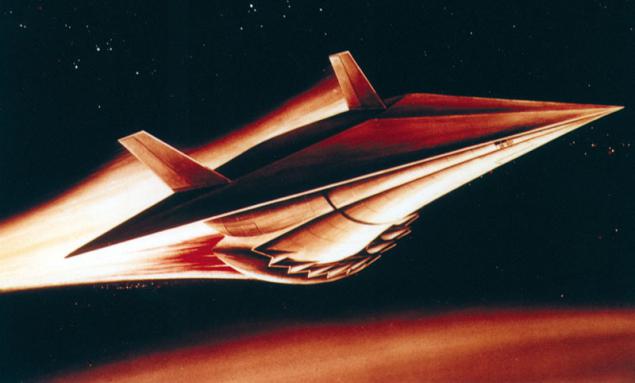
Project , developed since 1958 to 1963. Its equipped with different engines from the engine with the liquefaction of atmospheric oxygen to the nuclear ramjet. For the variant with the liquefaction of atmospheric oxygen acted following scheme: air enters the heat exchanger, in which the fuel is circulated - liquid hydrogen. They removed the oxygen from the air, which is then fed into a buffer tank from which went into the engine. In 1960 he was even created demonstrator engine with a thrust of 12 pounds, which has successfully worked for five minutes. Because of the novelty of technical solutions project was quietly closed in 1964.
Alternatives Shuttle h5> The beginning of the development of "Space Shuttle" has spawned a number of alternative projects, among which were several SSTO.
Chrysler SERV
Source 1 , Source 2
Very unusual looking designs reusable SSTO with vertical takeoff and landing.
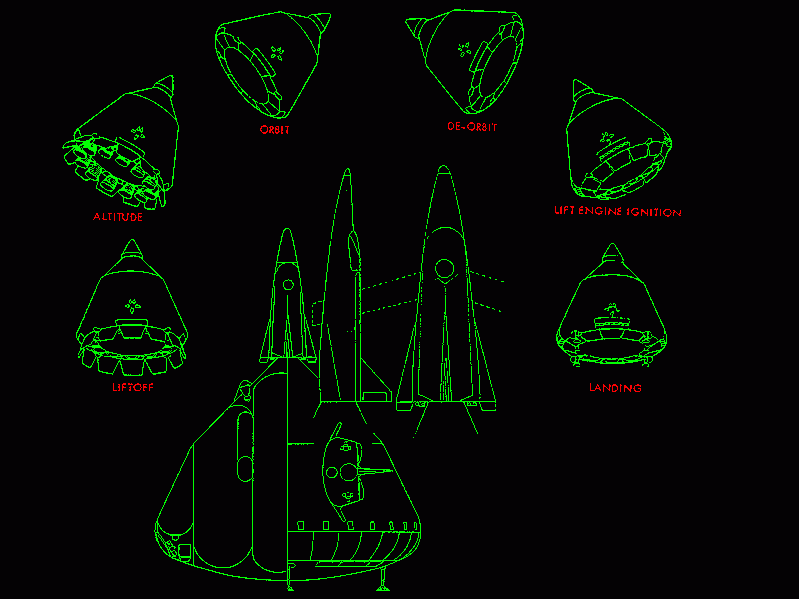
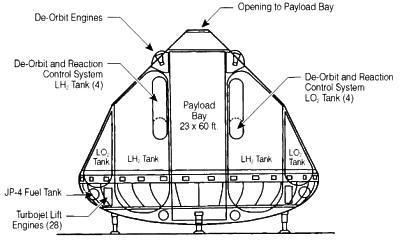
The total mass of 2040 tons, the GON into low Earth orbit 52, 8 tons
Martin Marietta Langley SSTO
Source
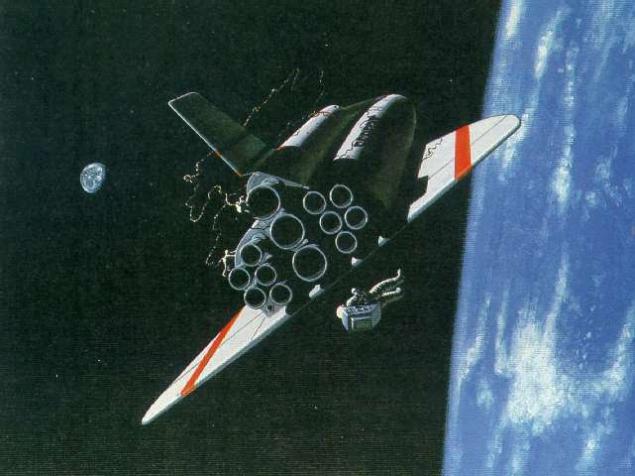
The total mass of 1925 tons to LEO PN 29, 5 tons. It is puzzling to them as much engines and different?
Boeing Langley SSTO
Source

In the project were the easy option in 1180 tonnes and 3438 tonnes of heavy in.
Boeing LEO VTVL SSTO
Source
Another wonderful unit with vertical takeoff and landing. Launch and landing sites were to serve special artificial lakes with a diameter of five kilometers.

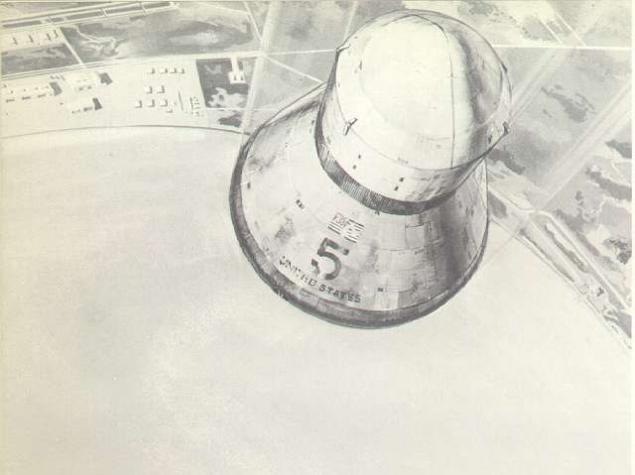
In various embodiments, the starting weight of 5,400 to 10,300 tons.
HOTOL h5> 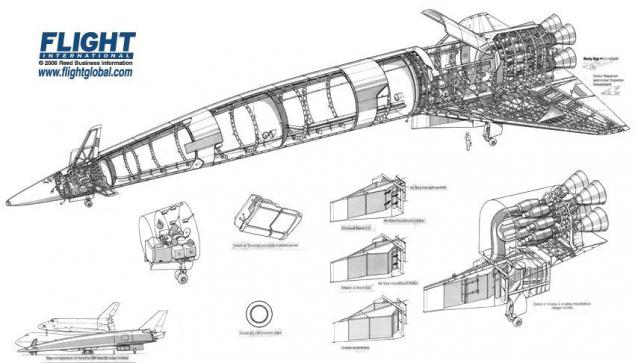
Against the background of triumph megalomania 70s project HOTOL looked practically feasible. Spaceplane sane sizes built around a unique engine RB545 . About the engine, little is known, for some reason, it classified. But the principle of operation is known, it is already known to us the idea of using liquid hydrogen for cooling air to the recovery of oxygen from it.
The project was closed in the 90s, when it became clear that the rear engine shifted back center of mass, which requires shift as far back center of pressure to ensure the sustainability of the flight. In short, the design made sense to start again, and it seems to have had neither the money nor the inclination.
«Sivka" Feoktistova h5> We also thought about SSTO. For example, an engineer and astronaut Feoktistov developed missile project "Sivka» , weighing about fifteen hundred tons. The rocket was supposed to take off vertically and sit upright.
X-30 h5> 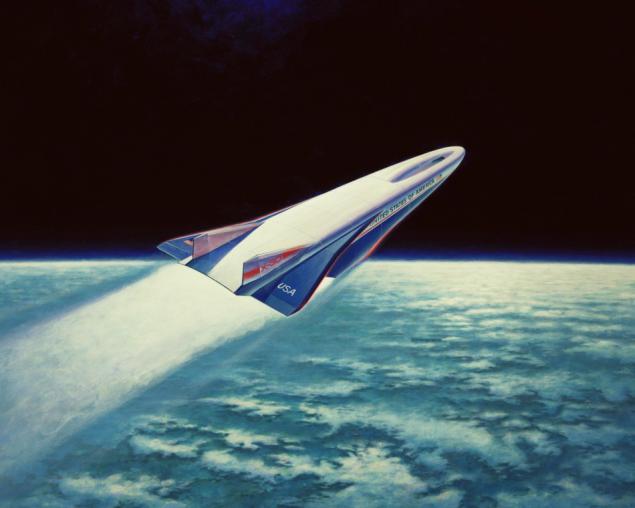
In this project decided to use a new type of engine - a hypersonic ramjet. The heat generated from the friction of the atmosphere was supposed to collect the coolant under the skin and pass into the combustion chamber. This approach promised to make available the rate of 20 M, and this is far from the first space. In various embodiments, the X-30 was designed as a high-speed passenger liner or carrier spacecraft. Total weight is 136 tons. As fuel was assumed to use a mixture of solid and liquid hydrogen (sludge). In 1993 the design was stopped because of budget cuts and technical concerns (such as yourself will take off the unit, which has only one engine operating at hypersonic speeds?)
DC-X h5> 
Prototype (scale model) SSTO unit vertical takeoff and landing. Successfully tested in the 90, like the previous projects, fell victim to funding cuts. There are videos and successful flight and crash landing:
VentureStar h5> 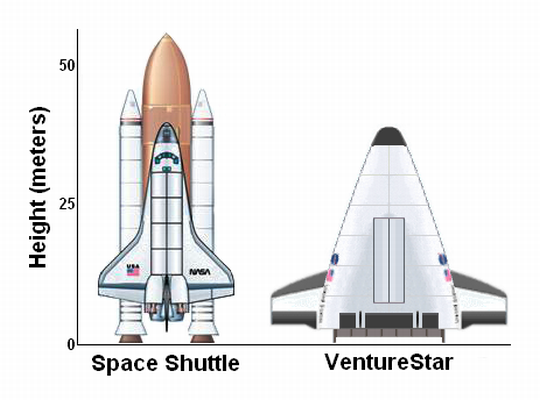
90s, vertical takeoff, horizontal landing. The prototype, scale model X-33 , was stopped in 2001 because of problems with the design (micro-cracks in the tanks of liquid hydrogen), problems with resistance and excess weight, and, again, the reduction in funding.
Roton h5> 
SSTO using helicopter blades. The blades are operated by jet engines at the ends, were used as the main engine at take-off, the compressor work on breeding and brake unit autorotation landing. The prototype blades, without engines and thermal protection, podlёtyval successfully, but the company went bankrupt in 2001.
Aquarius h5> 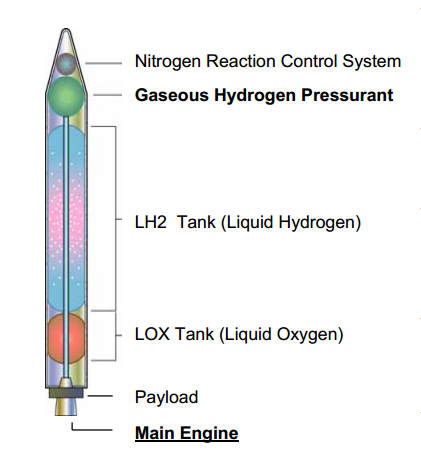
Implementing the concept of the "big missile just cheap." One stage of the project are allowed up to a third emergency start. The launch weight of 130 tons, Mon 1 ton missile designed as simple and cheap - one engine exclusion filing, except that the use of liquid hydrogen is somewhat out of the concept. Company-developer applied for the competition COTS («Commercial orbital transportation system"), the application was not selected, the project is closed.
Skylon h5> 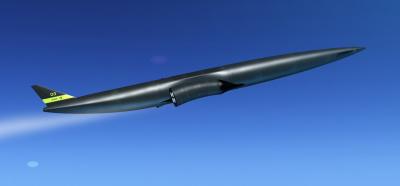
Probably the only living now the project. Developed in Britain, apparently, people and events pertaining to HOTOL, because it carries the same principles - a horizontal takeoff and landing, wings, engine cooling oxygen from the air.
According to information from the company's website , summer 2013. They got 60 million pounds from the British government, and signed a contract with ESA for 1 million euro to study the orbital transportation system. Parts of engines tested, fully engine until tested. Accordingly, until the work is shown (and confirmed by the design characteristics of thrust, fuel consumption, etc.) of any future project too early. Unfortunately, knowledge of the history of the various projects SSTO inspire pessimism.
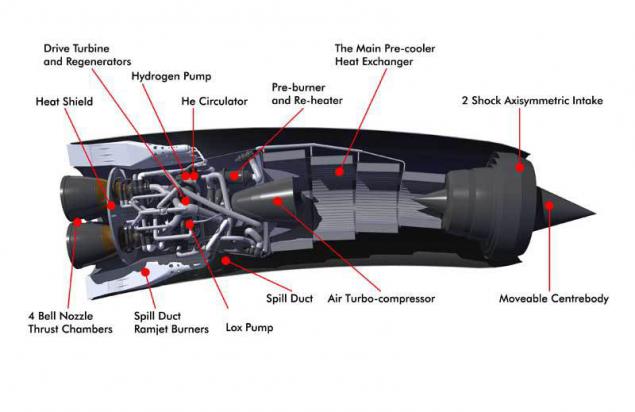
The engine with explanations. Material from the site of the company. I>
Orbiter h4>
In the virtual world we have, on the contrary, everything is fine. In particular, there is an addon to the Skylon for Orbiter'a. We require:
Skylon C1 addon to addon - Skylon C2 spacecraft3 and multistage2 Universal Cargo Deck 4 a href="http://www.orbithangar.com/searchid.php?ID=3388"> Velcro Rockets Incidentally, the enthusiasts of the VC group Orbiter made Russification program (no MFD, unfortunately). If you wish, here is the link .
After setting all this good run scripts Skylon C2

Our problem is access to low Earth orbit (200x200 km) and controlled landing at Cape Canaveral. It is assumed that you are already familiar with the Orbiter on my previous posts.

Switches to the view from the cockpit, exhibiting trim all the way up, and includes a motor (standard button, Num + ). Skylon will not tear himself away from the strip, in the end it is necessary to help take off by pressing Num 2
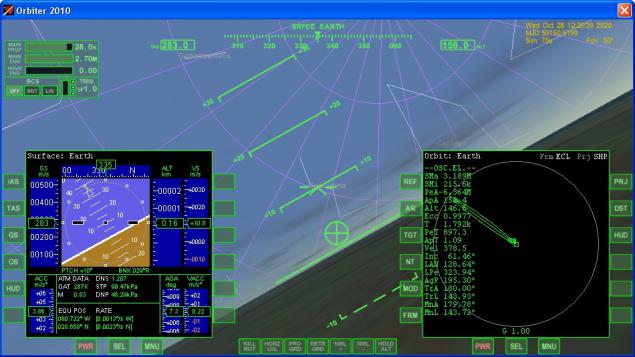
The car is heading steadily after reversal does not require special intervention in governance. Trim enough for sustained climb. Fuel mode jet engine enough to about 27 km altitude and speed 5 M. When the fuel will remain a little bit, switchable F3 in the "second Skylon» - «Skylon_rocketmode». Turn boosters there.

You can switch back to «Skylon C2» and close the flaps on the air intakes Left Shift - Num 1 , but this is purely for beauty. We continue to disperse until the height apocentre not be 200 km. Turn off the engine.
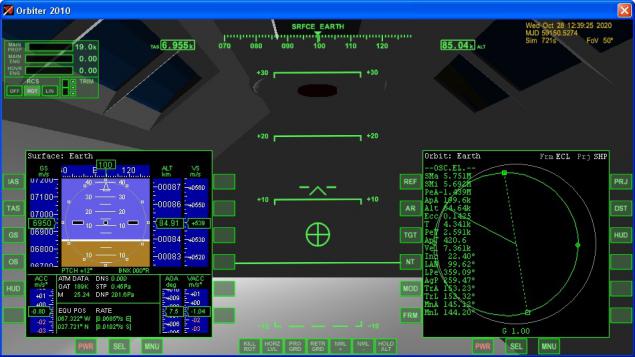
Waiting apocentre point, takes a position on the orbital velocity vector, give impetus to raise the pericenter.
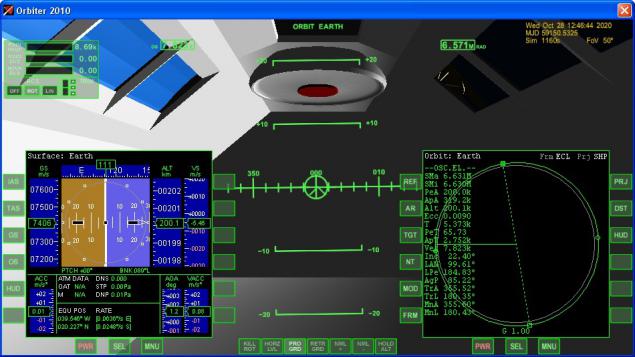
We are in orbit!
Unfortunately, fuel to fly to the ISS is not enough, so turn on the music and start to prepare for landing.
Videos recommend to watch in full screen later on. I>
Unfortunately, for the ship «Skylon_rocketmode» MFD card shamelessly lying, so you need to switch to «Skylon C2». Or just know that the first round of last us a horizontal maneuver for landing. Standard procedure - at a distance of 17 000 km brakes before until MFD Aerobrake not show undershoot 1000-2000 km. Brake gently, engines have become too powerful for the empty Skylon.

Engines orientation normally work only in «Skylon_rocketmode», so to ~ 100 km maintain their orientation.
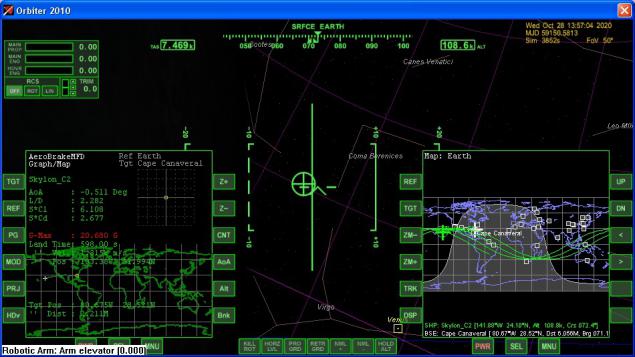
Now our task - to put the trimmer up and walking snake, maintaining the rate of descent of about 100 m / s, extinguishing the tracking speed and not to move away from the spaceport. Virtual Skylon very obediently behaves in the atmosphere, I almost forgave developers need to switch between the two ships.

Note how the snake draws Aerobrake MFD i>


The wings make landing a truly manageable. It is necessary to monitor the vertical velocity, the direction to the point of landing, the flight altitude and speed. Continue to walk snake:


Turn around for spaceport

Stripe across, but it's not terrible. If you played the flight simulator, then you know that it is necessary to aim a few away from the strip

Well, the band is almost at the rate

Do not forget the landing gear button G and sit down.

There are landing!
Navigation: posts by tag «Облегчение access to space », posts for the tag «Orbiter»
Source: habrahabr.ru/post/222395/



















